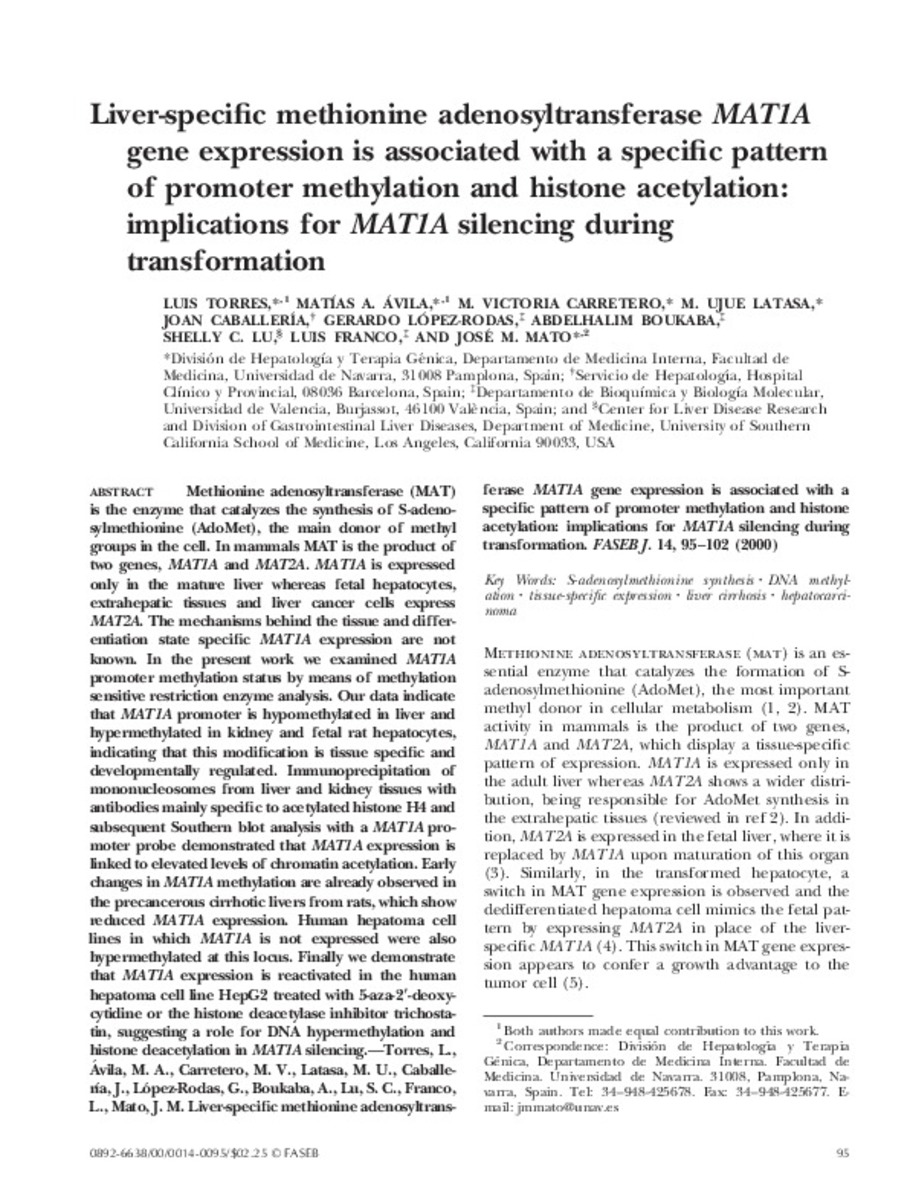Liver-specific methionine adenosyltransferase MAT1A gene expression is associated with a specific pattern of promoter methylation and histone acetylation: implications for MAT1A silencing during transformation
Palabras clave :
S-adenosylmethionine synthesis
DNA methylation
Tissue-specific expression
Liver cirrhosis
Hepatocarcinoma
Fecha de publicación :
2000
Editorial :
Federation of American Society of Experimental Biology
Cita:
Torres L, Avila MA, Carretero MV, Latasa MU, Caballeria J, Lopez-Rodas G, et al. Liver-specific methionine adenosyltransferase MAT1A gene expression is associated with a specific pattern of promoter methylation and histone acetylation: implications for MAT1A silencing during transformation. FASEB J 2000 Jan;14(1):95-102.
Aparece en las colecciones:
Estadísticas e impacto
0 citas en

0 citas en

Los ítems de Dadun están protegidos por copyright, con todos los derechos reservados, a menos que se indique lo contrario.







